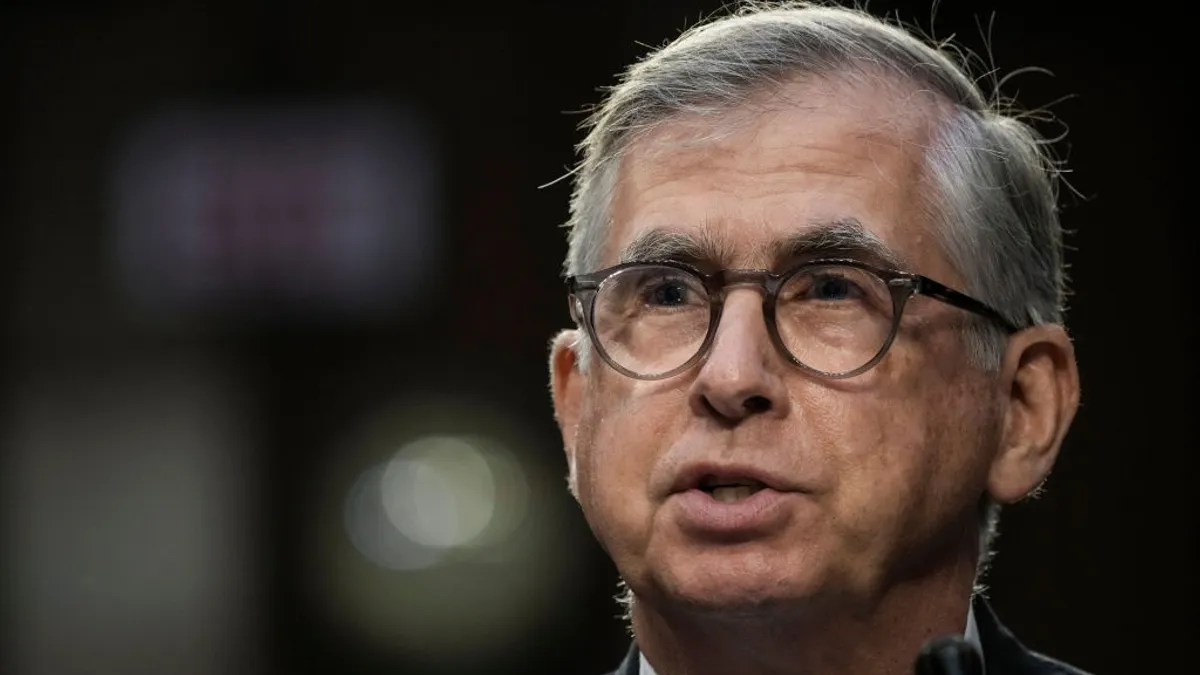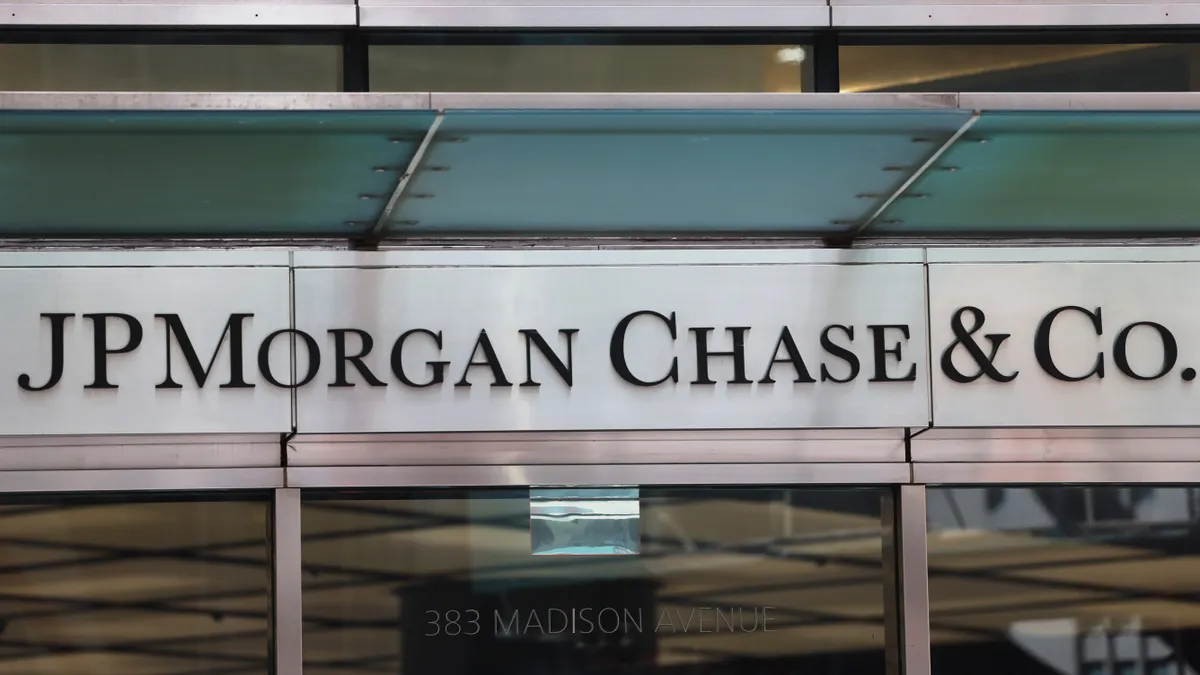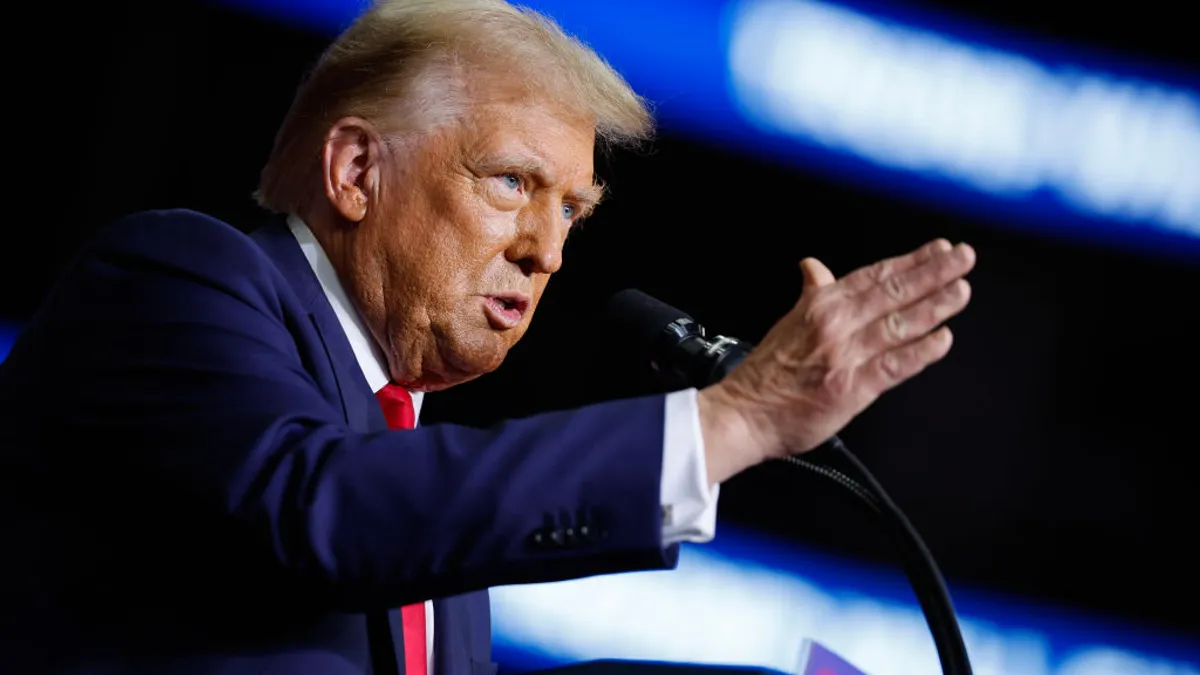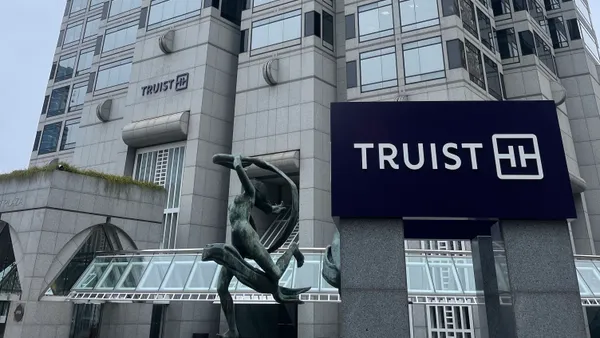Dive Brief:
- Truist CEO Bill Rogers aimed to assure analysts Thursday that his bank is seizing opportunities to grow its business while being mindful of expenses, as he tried to put more distance between the 2019 merger of SunTrust and BB&T and where the combined company is today.
- “We are on offense,” Rogers emphasized during the bank’s third-quarter earnings call, adding there’s no “merger hangover” related to expenses.
- As the super-regional bank plans for revenue growth to outpace expense growth next year, executives said Truist’s spending is now aligned with the revenue opportunities envisioned, which wasn’t the case coming out of the merger, Rogers acknowledged.
Dive Insight:
Even though the Charlotte, North Carolina-based bank is facing increased competition in its southeast footprint – smaller lenders such as Huntington and Fifth Third have expressed plans to grow business in that region – Rogers asserted that Truist is hitting its stride.
Following the 2019 merger, Truist’s path to profitability improvement “is multi-faceted and a function of client and business growth, while maintaining our cost discipline,” Rogers said, adding that much of it is focused on expanding existing client relationships.
“The good news is we see multiple paths and initiatives that, with proper execution, will result in improved performance,” he said.
But when Morgan Stanley analyst Betsy Graseck probed Rogers on what “proper execution” meant, Rogers conceded a better term might have been a “continuation of the execution momentum that we’ve started.”
“Coming out of the merger, there was a lot of diversion, and a lot of focus on activities of getting clients converted, and getting teammates onboarded,” Rogers said. “That’s just way behind us.”
Truist began to see the fruits of its efforts during the third quarter, he said, pointing to the addition of 40,000 net new consumer and business checking accounts, and increased primacy with and retention of clients. The pace of market share gains “granted, started slower out of the merger, but now is at a really good pace, and I expect that to continue,” he said.
The bank now expects full-year expenses on an adjusted measure to decline, compared with 2023’s $11.4 billion, according to earnings materials. Truist had originally pledged to keep spending flat for the year.
Still, the lender noted it expects to spend 4% more for the fourth quarter, compared with the third, as the bank invests further in hiring, its digital platforms, marketing and its risk infrastructure, CFO Mike Maguire said. Truist spent about $2.9 billion in the third quarter.
The bank also expects to see quarterly revenue drop 1.5% from the third quarter to the fourth; Q3 adjusted revenue was $5.1 billion. Truist expects full-year adjusted revenue to decline 0.5% to 1% this year, from $20.2 billion in 2023.
Last year, Truist embarked on a $750 million cost-cutting effort that included job cuts, scaling back on technology spending, consolidating business lines and shrinking the branch network. Rogers this year labeled that a needed “shock to the system.”
Wells Fargo analyst Mike Mayo on Thursday pressed Rogers on select executives being given special awards on top of compensation awards they already receive, while the bank’s stock has underperformed. Truist said last month it’s giving Maguire and Dontá Wilson, the bank’s chief consumer and small-business banking officer, “leadership awards” valued at $4.5 million.
Rogers noted the bank’s proxy filing lays out “quite clearly” that compensation is based on performance, with the primary measures being return on tangible common equity and growth.
“Don’t assume that we don’t have that mentality at this company,” he added.
The CEO has said the bank plans to continue investing in payments and middle-market lending, and the bank made several hires in its commercial banking, corporate banking, investment banking, wealth and payments businesses – many from larger banks – during the third quarter. Truist will continue hiring to bolster those segments in the fourth quarter, Rogers said.
Increased spending on Truist’s risk infrastructure includes investments related to data, cybersecurity and artificial intelligence, he noted, to “build a more enduring, consistent infrastructure.”
Rogers referred to it as a “continuous investment” for a company of Truist’s size “with the responsibilities and the obligations we have to our clients, our regulators and our shareholders.”
He noted Truist has “seen the elevation of expectations of how we manage data, we’ve seen elevated expectations in AI and investments that we want to make there, we’ve seen elevated expectations in terms of cyber.” The bank aims to “be responsive to the opportunities and challenges that exist in financial services.”













